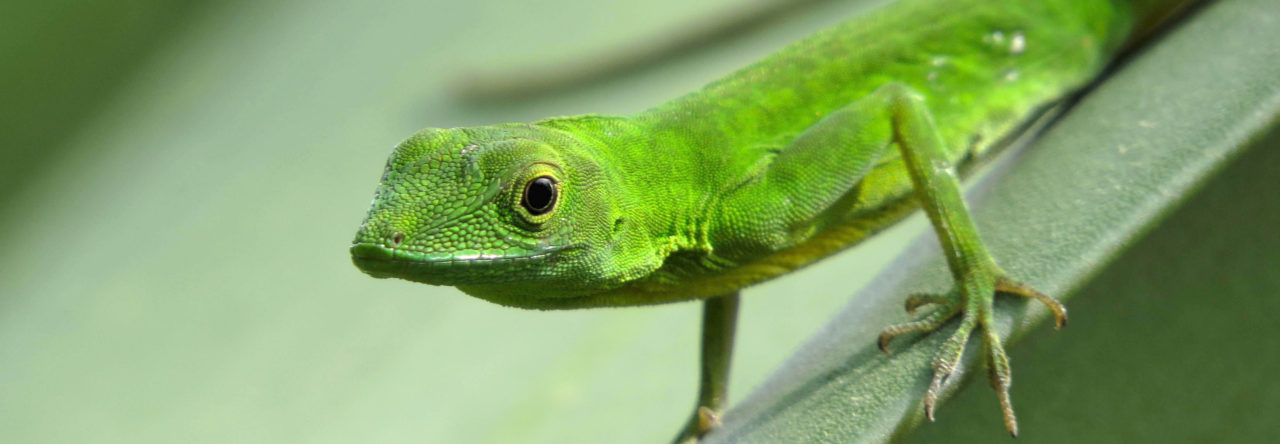Wonderful as the International Biogeography Society meeting was, there were more important fish to fry in Miami, so several of us played hooky to go looking for introduced anoles. First stop was Miami Beach, where we headed to the famed Fountainebleau Hotel, site of an introduction of A. trinitatis from St. Vincent (note to Wikipedia-adept readers; the entry for the hotel is quite informative, but lacks information on the hotel’s pivotal role in enhancing Miami anole diversity). Last year, Joe Burgess reported that the colony was no more, but we wanted to check for ourselves.
Slipping into the pool area at the back of the hotel, we inconspicuously mingled with the beautiful crowd, gazing up the enormous palm trees and into the bushes, pretending to be looking for birds and lost croquet balls. The morning was semi-sunny, but very windy—not ideal anole weather, especially when looking for a species hailing from near the equator. Nonetheless, when the sun peeked out, we did find the Miami big three—carolinensis, distichus and sagrei—but no sign of trinitatis. After an hour, with the security team moving in, we decamped through the back and headed on.
Next stop: the lush and beautiful grounds of the Fairchild Tropical Botanical Garden, its floral magnificence seemingly designed to provide ideal saurian habitat. We first visited the new Wings of the Tropics building, a lovely, enclosed house full of brilliant eye candy in the form of morpho, postman, and other fabulous butterflies. We stopped in there because word on the street is that the building will soon be re-named Toepads of the Tropics because some uninvited guests have taken up residence in the well-vegetated exhibit, enjoying the sun and the abundant insect fare. Sure enough, we spotted both a brown anole and a female red-headed Agama agama.

Floridian red-headed agama. Photo from dust tracks on the web
“Agama”??? you say? That’s right, these lovely African lizards have taken root in a number of places in southern Miami, amongst them the Fairchild. And in a biomically-appropriate way, these East African lizards are most common in the Old World Xeric exhibit in the gardens, hanging out amongst the Malagasy euphorbs and pachypodia, probably imaging that they’ve just slipped across Mozambique Channel. To complete the illusion, they have taken pains to scare away all the anoles from their rocky redoubt, though we did notice one brave male brown anole in the shade of a rock. Agamas may have the same effect on anoles as do curly-tailed lizards, a suggestion made by James Stroud, who was our very capable tour guide to the lizards of Fairchild.
By then, the sun was out in full force and the anole abundance was extraordinary.























